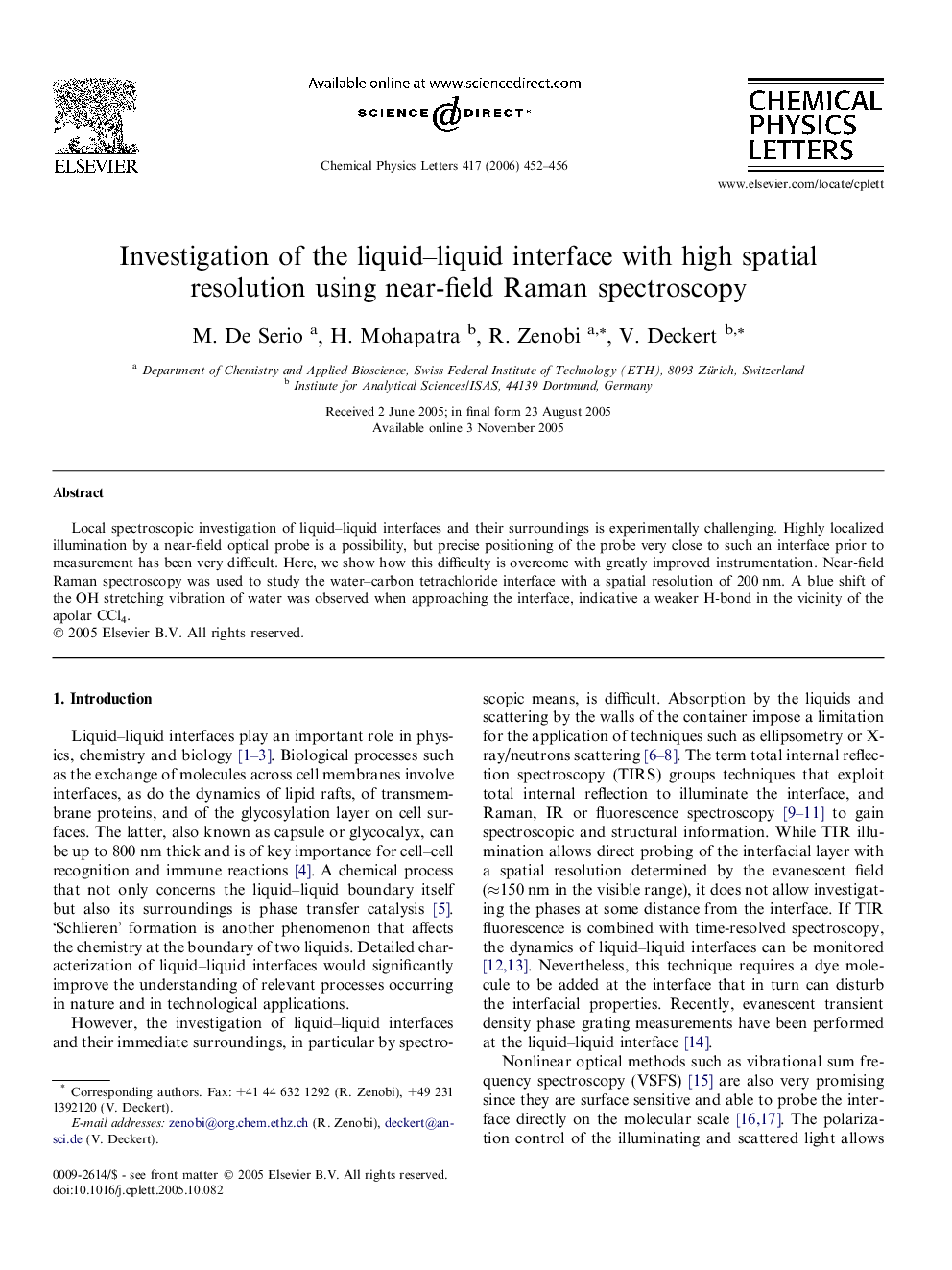| Article ID | Journal | Published Year | Pages | File Type |
|---|---|---|---|---|
| 5392049 | Chemical Physics Letters | 2006 | 5 Pages |
Abstract
Local spectroscopic investigation of liquid-liquid interfaces and their surroundings is experimentally challenging. Highly localized illumination by a near-field optical probe is a possibility, but precise positioning of the probe very close to such an interface prior to measurement has been very difficult. Here, we show how this difficulty is overcome with greatly improved instrumentation. Near-field Raman spectroscopy was used to study the water-carbon tetrachloride interface with a spatial resolution of 200Â nm. A blue shift of the OH stretching vibration of water was observed when approaching the interface, indicative a weaker H-bond in the vicinity of the apolar CCl4.
Related Topics
Physical Sciences and Engineering
Chemistry
Physical and Theoretical Chemistry
Authors
M. De Serio, H. Mohapatra, R. Zenobi, V. Deckert,
